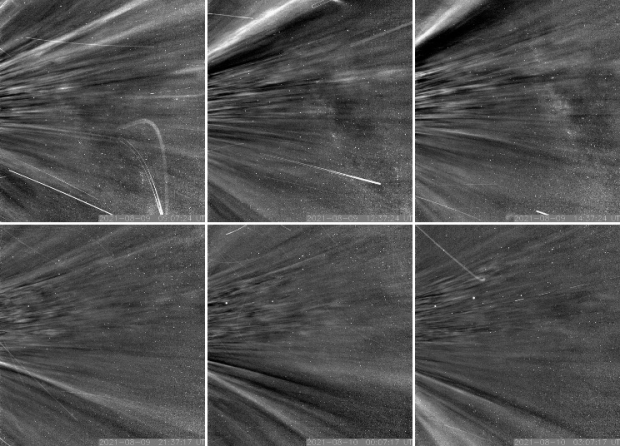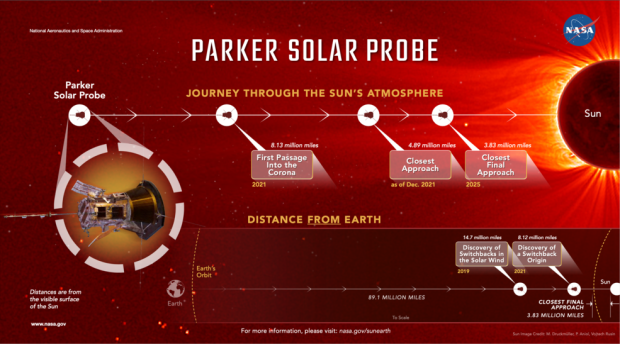NASA has announced that its Parker Solar probe has officially arrived at the Sun and "touched" it, marking a big moment in solar science.
NASA has released a video on its NASA Goddard YouTube channel that explains the Parker Solar probe mission and what researchers were planning on achieving when it was launched in August 2018. The probe was launched with the goal of getting closer to the Sun than ever before, and now after years of traveling towards our star, the probe has officially entered the Sun's atmosphere.
The Parker probe has passed the boundary that marks the edge of the Sun's atmosphere called the Alfven critical surface. The exact location of this boundary was unknown until the Parker solar probe recently passed through it, allowing NASA to estimate based on remote images of the Sun's corona, the boundary is anywhere between 4.3 to 8.6 million miles from the surface of the Sun. NASA's solar probe is flying through the Sun's upper atmosphere and is taking samples of particles and the magnetic fields of the unknown region.

"As Parker Solar Probe passed through the corona on encounter nine, the spacecraft flew by structures called coronal streamers. These structures can be seen as bright features moving upward in the upper images and angled downward in the lower row. Such a view is only possible because the spacecraft flew above and below the streamers inside the corona. Until now, streamers have only been seen from afar. They are visible from Earth during total solar eclipses," writes NASA.

The Parker Solar probe isn't done with getting close to the Sun, as it will continue to dive deeper into the atmosphere of Sun with its closest approach being in 2025. If you are interested in reading more about the Parker Solar probe, check out this link here.

